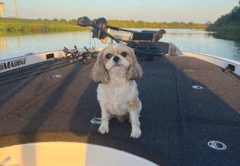Throughout the nation July is generally regarded as the deadliest month of the year for boating accidents. As a Floridian one could easily explain this as the waters in the northern parts of the country are just too cold to boat and swim in prior to the month of July and this would be partially true. However statistics complied by the Florida Fish and Wildlife Conservation Commission (FWC) show that Florida leads the nation with the most registered vessels in the country and the month of July is traditionally the most hazardous month for us as well. So our tip of the month would be to conduct your own safety inspection before some law enforcement officer does it for you at great expense or before you need one of these items to save your life or a member of your family’s life.
Regulations for boats are determined by the size and type of boat. Recreational boats less than 16-ft including kayaks, canoes and personal water crafts (jet skis) are classified as Class A vessels. Recreational boats between 16-ft to 26-ft are classified as Class 1, recreational boats between 26-ft and 40-ft are classified as Class 2, and recreational boats between 40-ft and 65-ft are classified as Class 3.
For Class A boats, including canoes and kayaks, one USCG approved Type I, II, or III life vest, Personal Floatation Device (PFD), must be available for each individual onboard the vessel. For children under the age of six, they must wear an approved Type I, II, III PFD that is approved for children when the vessel is underway. All Class A vessels must carry a Visual Distress Signal for nighttime operations as well as a Sound Producing Device capable of being heard for communicating and compliance with navigational rules. This device can be as simple as a marine whistle or a compressed gas air horn. For motorized Class A vessels, a type B-1 or better hand-held portable fire extinguisher should be onboard. For vessels with an enclosed engine or gas compartment, a Backfire Flame Control system and approved ventilator ducts are required for properly ventilating areas where gas and engine fumes can accumulate.
For Class 1 thru Class 3 vessels, additional requirements may be required.
In addition to the safety equipment, check to see you registration is up to date, your registration numbers are properly displayed, your pollution control placards are visible, your navigation lights are working properly, and if you boat is equipment with a marine sanitation device make sure it is operating properly and all discharge valves are in order.
For a complete list of what is required or to schedule a free vessel safety check, visit the U.S. Coast Guard Auxiliary’s website at www.cgaux.org. Local auxiliaries include: Flotilla 57 – Okeechobee; Flotilla 77 – Polk County; Flotilla 17-10 – Osceola; Flotilla 98 Charlotte Harbor; and Flotilla 94 Franklin Lock on the Caloosahatchee River.
Lastly, though not a requirement, you should have a laminated accident response reference card available on the boat. Just like in your automobile or truck, it should include the names and telephone numbers of your emergency contacts, your insurance company, your physician’s contact number (if you have special medical needs), the FWC emergency contact numbers, and an itemized list of key information you should obtained from the 3rd party in the accident. This may seem a little over reaching but during an accident things are moving fast and having this information readily available can help restore order to a stressful situation.
Boating is a wonderful family past time, just make it a safe one.






